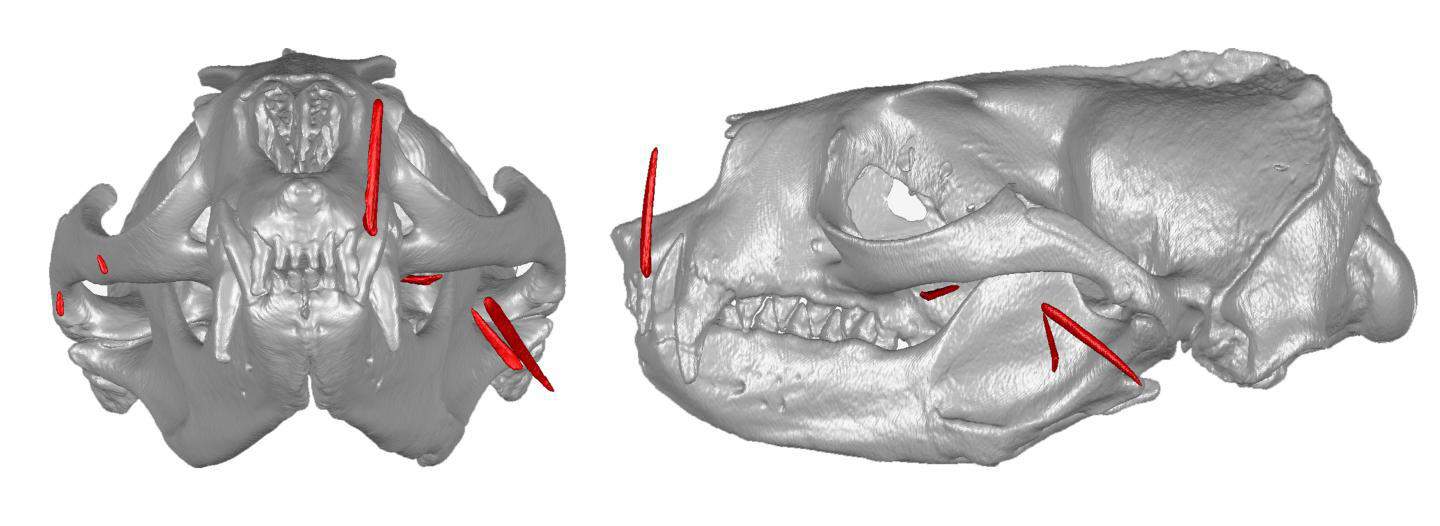
What price are you willing to pay for food? As humans, we face this challenge each time we shop, but for some seals and dolphins this may be a life or death decision.
Modern medical scanning reveals the steep price some marine mammals are willing to pay for food, after a stranded fur seal was discovered with more than a dozen facial wounds inflicted by its seafood prey.
The extreme dangers facing hungry marine mammals are revealed in a new study published today (Monday 4 May 2020) in the journal Diseases of Aquatic Organisms, led by marine biologist Dr David Hocking from the Monash University School of Biological Sciences.
“Marine mammals like whales, seals and dolphins need to eat seafood to survive,” Dr Hocking said. “But, we seldom consider what the fish think of this situation. Obviously, they are less than enthusiastic about being eaten, and some of them have evolved elaborate defence systems to help them fight off would-be predators.”
The study describes a stranded seal found at Cape Conran in south-eastern Australia, which – according to Dr Hocking – “followed its stomach one fish too far”. Unusually, a fish spine was seen poking through the seal’s cheek, prompting the researchers to CT scan the seal using the cutting-edge facilities at Monash Biomedical Imaging.
“We were shocked to discover not one, but six fish spines embedded in the seal’s face,” said Associate Professor Alistair Evans, a co-author on the study, also from the Monash School of Biological Sciences. These were later identified by comparing them with specimens at Museums Victoria.
“The fish spines turned out to be tail barbs from stingarees [a small type of stingray] and serrated spines from the back fin of Australian ghostsharks.”
While seals are known to feed on these types of prey, this is the first time that researchers have understood how dangerous this process can be. This raises an interesting question: is the Cape Conran seal just an unusual case, or have similar injuries in other stranded individuals simply been overlooked?
“In New Zealand, fur seals target ghostsharks regularly. With that in mind, similar facial wounds may actually be rather common, even though they haven’t been recognised much,” said co-author Dr Felix Marx from Museum of New Zealand Te Papa Tongarewa. “That’s perhaps not surprising, as the injuries could easily have been hidden beneath the seals’ thick fur.”
Animals from future stranding events will be examined using X-ray and medical imaging to look for further evidence of facial injuries – a unique yet gruesome window into the eternal battle between predator and prey.
To download a copy of the paper, please visithttps://doi.org/10.3354/dao03473
Subscribe
One email, each morning, with our latest posts. From medical research to space news. Environment to energy. Technology to physics.
Thank you for subscribing.
Something went wrong.
"seal" - Google News
May 04, 2020 at 08:38PM
https://ift.tt/2z7TS49
Last supper: Fish use barbs and spines to fight off hungry seals - ScienceBlog.com
"seal" - Google News
https://ift.tt/3c1qdrW
https://ift.tt/2SzWv5y

No comments:
Post a Comment